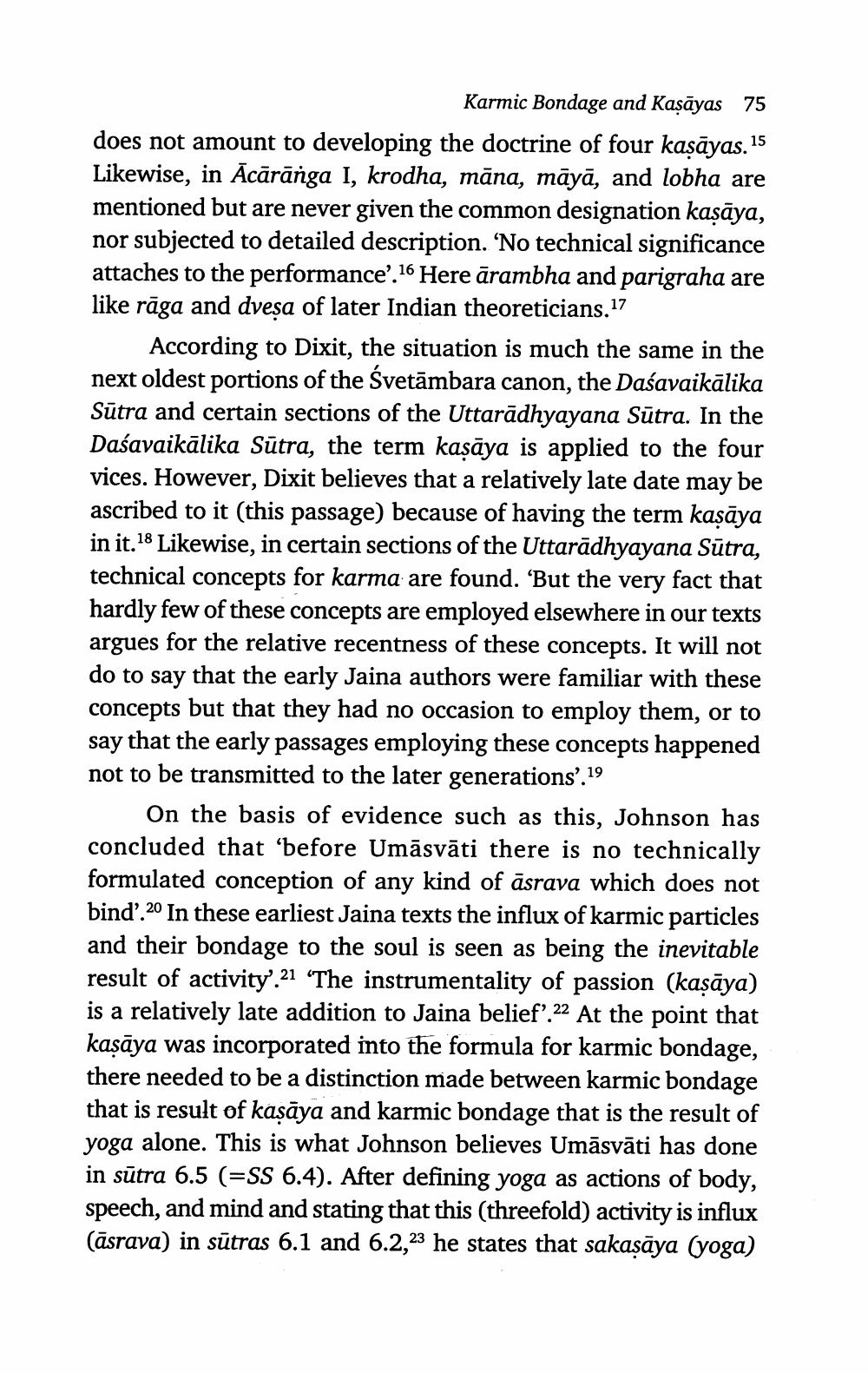________________
Karmic Bondage and Kaṣāyas 75 does not amount to developing the doctrine of four kaṣāyas. 15 Likewise, in Acārānga I, krodha, māna, māyā, and lobha are mentioned but are never given the common designation kaṣāya, nor subjected to detailed description. 'No technical significance attaches to the performance'. 16 Here arambha and parigraha are like rāga and dveṣa of later Indian theoreticians.17
According to Dixit, the situation is much the same in the next oldest portions of the Svetambara canon, the Daśavaikālika Sūtra and certain sections of the Uttaradhyayana Sūtra. In the Daśavaikālika Sutra, the term kaṣāya is applied to the four vices. However, Dixit believes that a relatively late date may be ascribed to it (this passage) because of having the term kaṣāya in it.18 Likewise, in certain sections of the Uttarādhyayana Sutra, technical concepts for karma are found. 'But the very fact that hardly few of these concepts are employed elsewhere in our texts argues for the relative recentness of these concepts. It will not do to say that the early Jaina authors were familiar with these concepts but that they had no occasion to employ them, or to say that the early passages employing these concepts happened not to be transmitted to the later generations'.19
On the basis of evidence such as this, Johnson has concluded that 'before Umāsvāti there is no technically formulated conception of any kind of asrava which does not bind'.20 In these earliest Jaina texts the influx of karmic particles and their bondage to the soul is seen as being the inevitable result of activity'.21 "The instrumentality of passion (kaṣāya) is a relatively late addition to Jaina belief'.22 At the point that kaṣāya was incorporated into the formula for karmic bondage, there needed to be a distinction made between karmic bondage that is result of kaṣaya and karmic bondage that is the result of yoga alone. This is what Johnson believes Umāsvāti has done in sūtra 6.5 (=SS 6.4). After defining yoga as actions of body, speech, and mind and stating that this (threefold) activity is influx (āsrava) in sūtras 6.1 and 6.2,23 he states that sakaṣāya (yoga)




